- Home
- Brian Garfield
Target Manhattan Page 6
Target Manhattan Read online
Page 6
“A Greek intranational feeder line bought three planes in nineteen sixty-five, and this purchase pumped enough capital into ACA to convince Ryterband and Craycroft that they had made the right decision. Construction and sales efforts were intensified; ACA’s Burbank facility was expanded onto a leasehold next door, and at considerable expense the old buildings there were razed to make way for enlargement of the assembly shops and offices.
“Given Craycroft’s track record as a businessman, however, it was inevitable that a fly settle in the ointment.
“According to recent testimony by Fredric Phelps (then office-manager and treasurer of ACA), ‘We never had anything much better than a rickety jerry-built financial structure.’ Craycroft and Ryterband had built the initial company on investment capital they had raised by selling stock to four motion-picture producers. Each of the four producers had been in preproduction with war movies at the time. For the first few years the relationship between ACA and the four producers had been successful and symbiotic. But the producers were no longer making war movies. (One of them, in fact, was no longer in the film business at all.) ‘And ACA was no longer a Hollywood outfit,’ Phelps recalls. ‘I guess they felt they had no further reason to go on lending us the support and encouragement of the movie community.’
“To build the company in the first place, Craycroft and Ryterband had made an initial stock tender of ten thousand shares. By the time they got done raising capital, they ended up—between them—owning only twenty-six percent of the company. The remaining seventy-four percent belonged to the four producers.
“But the bylaws and articles of incorporation of ACA’s charter had left operational corporate decisions to the absolute authority of Craycroft and Ryterband so long as they, between them, controlled more stock than any other single stockholder.
“Since the company’s inception it had been the policy of the brothers-in-law to plow profits back into the company. By nineteen sixty-seven ACA had sold or contracted more than seventy converted bombers. In small-business terms they were doing a tremendous volume, considering that each sale meant gross receipts from forty thousand dollars up. But the large expansion of facilities between nineteen sixty-five and sixty-six still hadn’t been paid off, and operating expenses were climbing because of inflation and labor costs.
“By 1968 the producers were arguing that business was falling off because of the increasing obsolescence of propeller-driven aircraft. The world was well into its second and even third generation of jet passenger and cargo planes. Even the smaller countries and businesses were buying jets now. The invention of new, economical jets like the Lear and the Boeing 727 had made a large competitive dent in the market that had previously been dominated by the venerable DC-3 Dakota and the Craycroft conversions.
“Phelps recalls, ‘Back at the beginning, when we were doing mainly mock-ups and restorations for air-war movies, there was a time when I tried to persuade Harold and Charlie to restructure the financial setup. They could have gone public even then. It was a sound operation. It was making good money. If they’d gone public, they’d have ended up in absolute control of the company, with very little additional investment of their own. Or, I told them, they had the alternative of buying out a couple of the producers. If they’d bought that stock back then, they could have got it for ten bucks a share, and they’d have ended up owning more than fifty-one percent of ACA.
“‘But I couldn’t talk them into it. They didn’t want to go public because they didn’t want to hassle with the SEC and all that crap—they were both kind of naive, they didn’t want to get mixed up in the big bad world of high finance. And they didn’t want to buy out any of the other stockholders because that was money they’d rather plow back into the company to keep expanding. Hell, you couldn’t help seeing the handwriting on the wall.’
“The four producers soon reached loggerheads with the brothers-in-law; and a relationship that had begun at arm’s length ended up at sword’s point.
“The result was a complex series of legal maneuvers by the procucers. Two of them sold their stock, with buy-back options, to the other two. This made the second two producers majority stockholders. By August, nineteen sixty-nine, Craycroft and Ryterband occupied an untenable position, despite the protection they thought they had gained with their authoritarian charter and bylaws.
“Business was still excellent, but the number of new orders was falling off. The producers insisted this was because of competition from the new low-priced jets. They insisted that ACA could only prevail in the market by moving into the jet age.
“This was anathema to Craycroft, of course. He wouldn’t have a jet on a platter: He hated them.
“The end was inevitable. Craycroft and Ryterband were forced to divest themselves of control of the company. They sold their twenty-six percent of it to the producers, who promptly went public. ACA is a thriving corporation today, well invested in jet aircraft development and sales, but the partners who created the company were frozen out in nineteen sixty-nine and have had nothing to do with it since then.
“A small Long Island concern, Aeroflight, Incorporated, had been struggling along for years selling aircraft of its own design to the private-aviation market—mainly two- and four-seater monoplanes for the weekend-flier trade. It had never given Cessna or Piper any cause for alarm but for several years Aeroflight had been doing a steady little business in lightplane sales. The president and chief designer of Aeroflight was a man named Samuel Spaulding, who in World War Two had been a maintenance engineer under Craycroft’s command.
“Spaulding had been following the ACA case in the financial trade publications. When he learned of the ouster of Craycroft and Ryterband, he made contact with them and arranged a meeting.
“The conference took place November sixteenth, nineteen sixty-nine, in Aeroflight’s offices on the company’s private factory and airfield near Brook-haven, Long Island. Its result was that Craycroft and Ryterband joined Aeroflight.
“The brothers-in-law had realized a certain amount of capital from the forced sale of their ACA stock. Some of this had been eaten up by legal fees and costs, and a good chunk was taken from them as capital-gains taxes; but they had retained approximately one hundred thousand dollars each, and with that money they bought into Aeroflight—an investment which bought them eighteen percent of the company.
“Spaulding was tremendously loyal to Craycroft—it was a kind of hero worship—and it was not long before Craycroft moved into the center of action. Using Aeroflight’s capital, he returned to California and made a tender to the new bosses of ACA to buy some of the old bombers they still had in inventory from Craycroft’s tenure. ACA was only too willing to unload these obsolete craft; Craycroft—with Spaulding’s bargaining agents acting for him—was able to buy the old planes at excellent prices. ACA was happy to write them off as tax losses.
“There were twelve planes involved: six B-17 Flying Fortresses, four B-24 Liberators and two Lockheed Constellations. All of them were at least twenty-five years old. They had all been made airworthy, but since none had been on order by any paying customer, the pressurization and heating and navigational systems had not been updated. In sum they were sound but dismally obsolete.
“In March, nineteen seventy, Craycroft, Ryterband, two Aeroflight pilot-employees, and eight hired free-lance pilots arrived in Burbank to take delivery of the twelve aircraft on the ACA airfield. The sale was consummated and the airplanes took off on the first leg of what would have been a comic odyssey if it hadn’t been for its tragic consequences.
“With only one man aboard each plane—the pilot—the flight of twelve planes worked into an uneven formation over the San Fernando Valley and began flying eastward across the Southwestern deserts and mountains. The flight plan called for a route that took them across Nevada, Utah, Colorado, Nebraska, Iowa, and Illinois, and thence east to New York. Refueling and overnight stops were scheduled at Denver, Des Moines, and Toledo. It had been necessary to ob
tain clearances in advance for the twelve-craft flight, and therefore the expedition had to adhere to its precleared schedule; the airports en route were not equipped to handle such large influxes of transient aircraft normally, and special arrangements had to be made.
“An oxygen malfunction aboard one of the B-24’s forced that plane to deviate from the planned course over the Sierra Nevada range; the plane had to make its own way south and follow the much longer low-altitude route east by way of Tucson, El Paso, and Oklahoma City. This reduced the formation to eleven. It was further reduced—to nine—when one B-17 developed engine trouble and had to divert to Salt Lake City, and almost simultaneously a Constellation lost touch with the group in a heavy cloud formation—the result of primitive instrumentation and inadequate communication air-to-air—and because of a faulty compass ended up with insufficient fuel to reach the first stop (Denver). It had to divert to Grand Junction, Colorado, and because of a fuel shortage at that airport it never caught up with the rest of the flight.
“The nine remaining planes straggled into Denver over the course of ninety minutes during the evening of March twenty-first, nineteen seventy. A feature article from the next morning’s Denver Post includes an impressive photograph of the ancient planes lined up at their hardstands, and a brief nostalgia-slanted interview with Craycroft, who is quoted as saying, ‘You may never see their like again around here. They’re really kind of majestic, aren’t they?’
“Pushed by the tight schedule of clearances, the nine planes took off from Denver at six fifteen A.M. March twenty-second, heading for a midday refueling stop at Des Moines. The distance is about seven hundred miles and Craycroft expected to reach Des Moines by about eleven CST.
“A half hour out, Ryterband reported altimeter trouble but no one expressed much alarm, since they were flying VFR and the weather looked good, and there were no mountains along the route.
“Then a front, forecast as stationary, suddenly began to move north across Kansas and eastern Nebraska. Tornadoes struck four towns and several farm areas along the border between the two states, and Omaha radio advised Craycroft’s flight that it now looked as if the storm would be right in the middle of the flight plan if Craycroft stayed on course.
“It was a severe storm, the remnants of Hurricane Bertha, which had struck the Texas coast two days previously and was moving in an unusual due-north direction. Storm ceiling was altitude zero and the Air Force reported that it went straight up to thirty thousand feet. It was moving north, by eight that morning, at nearly sixty miles an hour and its interior winds were measured at more than that.
“Then a new meteorological report came in, at approximately eight fifteen, which said the storm appeared to be slowing down its rate of travel and veering toward the west.
“Craycroft elected to try and beat the storm into Des Moines. He did, however, order Ryterband to change course and land at Grand Island, because he didn’t want to risk Ryterband’s being stuck in obscure weather with a faulty altimeter. Ryterband peeled off in his B-24, and that left eight.
“At about nine forty-five (now on Central Time) the flight entered a bank of floor-to-ceiling cloud which obstructed visibility but contained very little turbulence; it was the remainder of a slow-moving cold front crossing the plains, and was not connected with the hurricane weather system to the southeast. Craycroft and his pilots seem to have felt no alarm about the cloud front. They had expected it. They also expected to emerge from its leading edge some twenty-five miles later.
“Some of them did.
“Unfamiliarity with the old controls, and lack of visibility within the cloud front, made for uncertain navigation for the pilots. At nine fifty-two one B-17 sideswiped another in the murk.
“The collision seems to have been wingtip-against-tail. The aircraft struck in the tail lost most of its rudder surface, and its elevator controls seem to have been rendered inoperative by the crash. The plane spiraled down out of control through the clouds and plummeted into a soybean field, killing the pilot instantly.
“The second plane, with part of its starboard wing crumpled, had lost much of the cambering effect of that wing, and while it did not go completely out of control, it was no longer capable of sustained flight. The pilot, Richard Tree, was commended afterward for the skill with which he set the plane down—a belly landing on farm fields. The plane was a total loss—cut apart with welding torches and sold for scrap after Aeroflight had salvaged some of the more portable components—but Richard Tree walked away from it unscathed.
“That left six. Emerging from the cloud front, regaining radio contact with the ground, Craycroft’s flight now found the entire horizon ahead of them blocked by black swirling weather. The hurricane had leaped across their path.
“Craycroft requested permission from the ground to divert to Kansas City, which lay to the south of the storm. Permission was granted and the six planes—half the original flight—arrived intact at KC airport shortly after noon. But facilities there had not been prepared for them, nor was it possible to get back on the original schedule; so the six planes had to wait on the ground in Kansas City for three days before a new clearance schedule could be arranged. In the meantime two of the earlier aborts bypassed them and made their way independently to New York, while Ryterband and the remaining pilot brought their repaired planes into Kansas, rejoining the flight and expanding its strength to eight aircraft.
“By this time the expedition was attracting more than just local publicity. The death of ‘Dusty’ Robinson, pilot of the B-17 that had crashed in Nebraska, had focused media attention on the Craycroft trek. Television and wire-service personnel began to crowd the KC airport and, angered by them, Craycroft kept his eight subordinates incommunicado and refused to cooperate with the press until a hurried call from Spaulding at the head office persuaded him, with reluctance, to grant interviews.
“The flight had become an adventure in the eyes of the public. In the eyes of Aeroflight, however, it had become a fiasco. The publicity was not the sort which was likely to encourage customer confidence in Aeroflight’s products. And the ferrying of the planes across the country was becoming tremendously costly—an expense capped by the fact that the insurance on the two wrecked B-17s was not nearly enough to cover their replacement cost on the open market; the insurance companies had refused to cover any sums greater than the actual purchase price of the airplanes, which had been bought from ACA at sacrifice price.
“It seems to have become a high-adventure challenge to the men in Craycroft’s flight group, however. Spurred by the television attention they were getting, the pilots encouraged Craycroft and on March twenty-sixth the eight planes left Kansas City in tight formation. Seven of them arrived in New York that night; the eighth was forced down in Pittsburgh by hydraulic failure. It was a minor dysfunction, easily and quickly repaired, but the news media seized on it and milked the story unashamedly: A photograph which appeared on front pages across the country showed the copilot—the hapless but expert Richard Tree—in the act of disgustedly hurling his cap at the ground, with the sagging airplane behind him on the runway.
“After that the disconsolate Craycroft sat in his office at Aeroflight waiting for the orders to come in, and evidently knowing in his bones that they never would.
“Of the ten surviving aircraft from the great cross-country adventure, only three were ever sold to paying customers. In nineteen seventy-two Spaulding donated two of the B-24s to the Air Force Museum at Wright Field in Ohio, hoping the tax credit from this contribution would wipe out the company’s taxes for the year; but as it turned out, Aeroflight had no profits on which to pay taxes anyway, and the donation simply reduced the company’s inventory assets by seventy-five thousand dollars.
“The two Constellations were the only planes from the flight to go into standard commercial operation; they were bought in nineteen seventy-one by a Canadian oil company for transporting workers to and from the isolated oil fields on the Western Slope.
/> “One of the B-17s was bought by an amusement park in upper New York State. The purchase price was approximately fifteen percent of the cost of Aeroflight’s investment in the plane.
“The remaining five aircraft took up space on the company’s runway. Out of what has been described, by company test pilot Richard Tree, as ‘that crazy obsession of Harold’s,’ the planes were kept in instant-ready condition at all times: fueled up and ready to take off. Now and then Craycroft would take one of them up for a spin, but these occasions became less frequent with time because of the expense of refueling.
“Aeroflight struggled through nineteen seventy-two and early nineteen seventy-three, staying afloat by selling its standard light planes. Craycroft and Ryterband had little to do, actually, other than kibitz with the production mechanics and toy with trifling improvements they incorporated into Spaulding’s designs. But Spaulding, out of intense loyalty to his old commander, kept the two men on; and they stayed because there were no other offers.
“On June seventh, nineteen seventy-three, Spaulding suffered an acute coronary thrombosis. He died within thirty-six hours.
“Controlling stock in the company went into the hands of Spaulding’s childless widow, but effective control of the company’s operations fell to Craycroft and Ryterband; Mrs. Spaulding, in ill health herself and severely traumatized by her husband’s death, trusted his two old friends and seems to have had little or no interest in taking part in company business.
“Craycroft and Ryterband, according to pattern, ran the company into the ground. They did so with amazing alacrity, even for them. By the end of nineteen seventy-three the company’s creditors were suing for payment of back debts, and Craycroft and Ryterband faced bankruptcy once again.

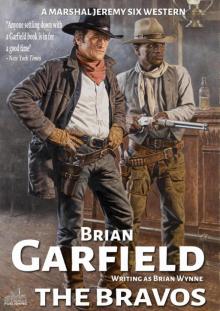 Marshal Jeremy Six #3
Marshal Jeremy Six #3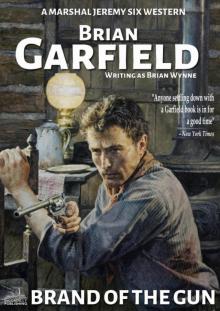 Marshal Jeremy Six #6
Marshal Jeremy Six #6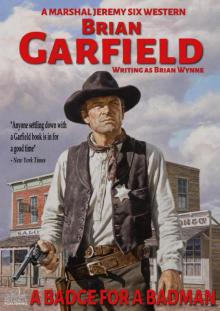 Marshal Jeremy Six #5
Marshal Jeremy Six #5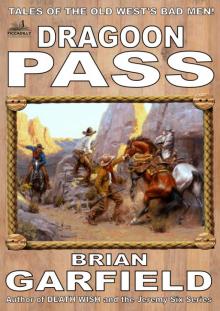 The Outlaws 2
The Outlaws 2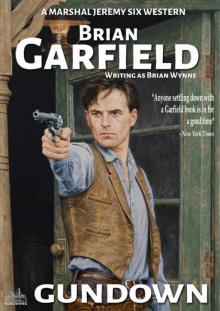 Marshal Jeremy Six #7
Marshal Jeremy Six #7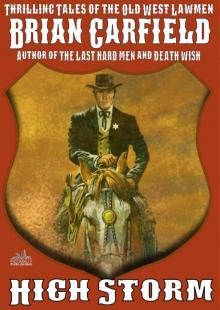 The Lawbringers 4
The Lawbringers 4 Marshal Jeremy Six #4 the Proud Riders
Marshal Jeremy Six #4 the Proud Riders The Romanov succession
The Romanov succession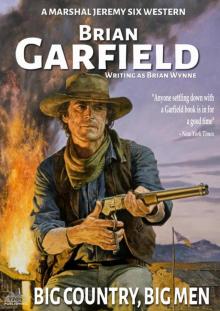 Marshal Jeremy Six #8
Marshal Jeremy Six #8 Sliphammer
Sliphammer Line of Succession
Line of Succession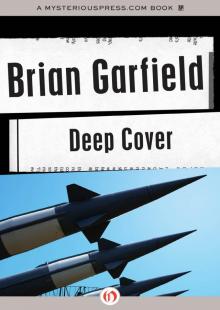 Deep Cover
Deep Cover Kolchak's Gold
Kolchak's Gold Death Wish
Death Wish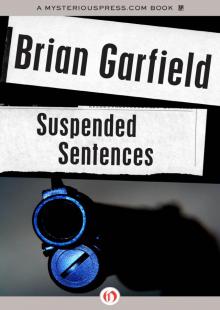 Suspended Sentences
Suspended Sentences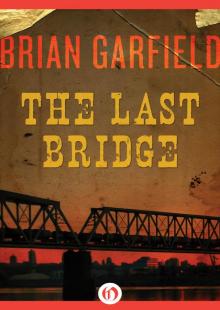 The Last Bridge
The Last Bridge Relentless
Relentless The Vanquished
The Vanquished The Last Hard Men
The Last Hard Men Hit and The Marksman
Hit and The Marksman Villiers Touch
Villiers Touch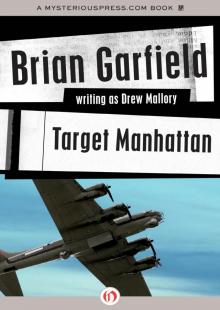 Target Manhattan
Target Manhattan Marchand Woman
Marchand Woman What of Terry Conniston?
What of Terry Conniston? Threepersons Hunt
Threepersons Hunt Checkpoint Charlie
Checkpoint Charlie Romanov Succession
Romanov Succession Necessity
Necessity Death Sentence
Death Sentence Fear in a Handful of Dust
Fear in a Handful of Dust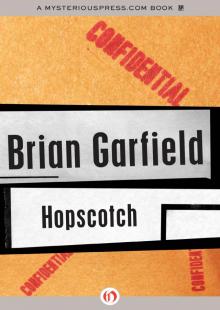 Hopscotch
Hopscotch